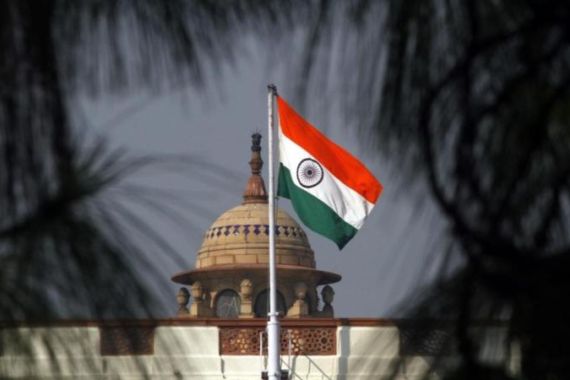Amid outcry, Modi lays foundation of new parliament building
Critics say 200 billion rupees the gov’t is reportedly spending on project could be used to fight COVID-19 and repair economy.

Prime Minister Narendra Modi has laid foundations for a huge new Indian parliamentary building, the centrepiece of a grand but contentious redevelopment of New Delhi’s colonial-era core.
Critics say the 200 billion rupees ($2.7bn) that the Hindu-nationalist government is reportedly spending on the vast project could be better directed to fighting COVID-19 and repairing the pandemic-battered economy.
Keep reading
list of 3 itemsHow will Indian PM Narendra Modi deal with angry farmers?
India’s winter of discontent: Farmers rise up against Modi
India is one of the worst-hit countries and has so far recorded more than 9.7 million infections and at least 141,000 deaths, according to Johns Hopkins University in the United States.
Modi, 70, also performed Hindu rituals at Thursday’s ceremony to kick off construction of the new parliament – a building meant to be the heart of the officially secular democracy of 1.3 billion people.
The project begins even as legal challenges make their way through the Supreme Court that could potentially scupper, or at least delay, the overhaul.
It also comes as tens of thousands of farmers, angry at new agricultural laws, blockaded the capital for a second week, in a major challenge to the authority of Modi and his reform agenda.
Due for completion in 2022, when India marks 75 years of independence from Britain, the much larger new parliament will replace an old building that the government says is showing signs of “distress”.
Designed by British architect Edwin Lutyens in the early 20th century as the commanding centrepiece of the Raj, the area also comprises the grand Rajpath boulevard, the president’s residence, government offices, the national museum and the India Gate war memorial.
Modi’s overhaul of the sweeping, tree-lined and lawned vista will see it enclosed by rows of imposing new government buildings and the prime minister’s office shifted and enlarged.
Some of the old parliament will be “retrofitted” and continue to be used for government business, while other buildings will reportedly be turned into museums. Some will be demolished.
‘Big scandal’
Modi’s office said the redevelopment “will match the aspirations of a new India”.
But there has been a chorus of criticism, not just at the price tag, which is expected to be 9.7 billion rupees ($130m) for the triangular parliament complex alone.
Tikender Singh Panwar, an opposition politician and an expert on urbanisation, told AFP news agency the redevelopment was a “big scandal in the making”.
“Curiously, for a project of this significance, size and cost, the details are sketchy … I see this as a fascist leader wanting to leave an imprint of his glory on Delhi,” he said.
Political commentator Arati Jerath said the redevelopment signalled the “making of a new India that will bear Modi’s imprint”.
“This money could have been well spent on healing and repairing the economy [and] creating jobs but instead of which it is being spent on fulfilling one man’s grandiose dreams of what a new India should look like,” said Jerath.
Some opposition parties have also criticised the government’s decision to perform Hindu rituals during Thursday’s inauguration.
Hindus form the majority of India’s population and many religious minorities, in particular the 200 million Muslims, fear that Modi wants to remould India as a Hindu nation.
The project has also run into legal trouble with several petitions in India’s top court questioning its validity on the grounds of land and environmental rules.
The Supreme Court on Monday expressed unhappiness over the government’s rush to inaugurate the project before it had considered the pleas.
It, however, allowed paperwork and other procedures – including Thursday’s ceremony – to go ahead.